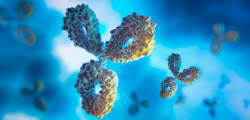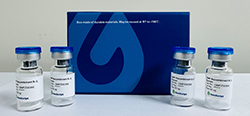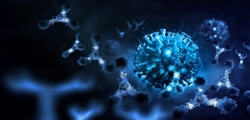
Figure 1. GLP-1 (7-37)-induced luciferase expression in HEK293/CRE-Luc/GLP1R cells. After stimulation by agonist GLP-1 (7-37), the cells are determined with Fire-Lumi™ Luciferase Assay System (Cat. No. L00877C-100, Genscript) and the relative luminescence units (RLU) were recorded by plate reader (Pherastar, BMG). The RLU were plotted against the log of the cumulative doses of GLP-1 (7-37) (Mean ± SEM, n = 3). The EC50 of GLP-1 (7-37) on cells was 0.29 nM.

Figure 2. Dose dependent stimulation of intracellular cAMP accumulation upon treatment with GLP-1 (7-37) in HEK293/CRE-Luc/GLP1R cells. d2 acceptor fluorophore-labeled cAMP (Cat. No. 62AM4PEC; Revvity) and intracellular cAMP in HEK293/CRE-Luc/GLP1R cells competitively bind with Europium Cryptate-labeled anti-cAMP monoclonal antibody. The FRET signal decreases as the intracellular cAMP concentration rises and was measured by plate reader (Varioskan, ThermoFisher). The EC50 of GLP-1 (7-37) on cells was 0.29 nM.

Figure 3. FACS analysis of cell surface expression of human GLP1R on HEK293/CRE-Luc/GLP1R cells. The HEK293/CRE-Luc/GLP1R cells (blue) and the negative control HEK293 cells (red) were probed using GLP-1-Fc fusion protein (GenScript) and FITC-conjugated goat anti-human IgG (H+L) (Cat. No. A01318, Genscript).
HEK293/CRE-Luc/GLP1R Stable Cell Line
| M00562 | |
|
|
|
| 询价 | |
|
|
|
|
|
|
| 联系我们 | |




































